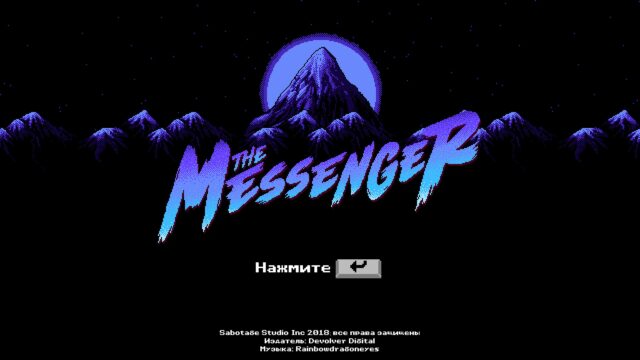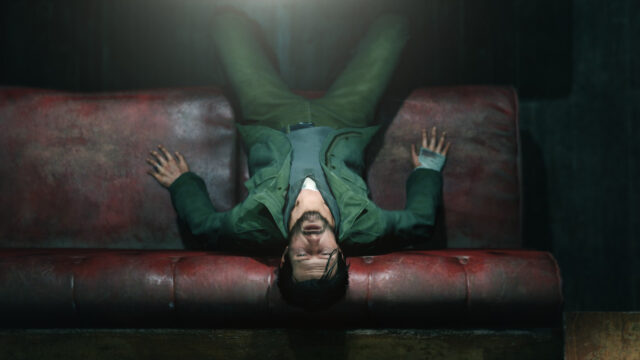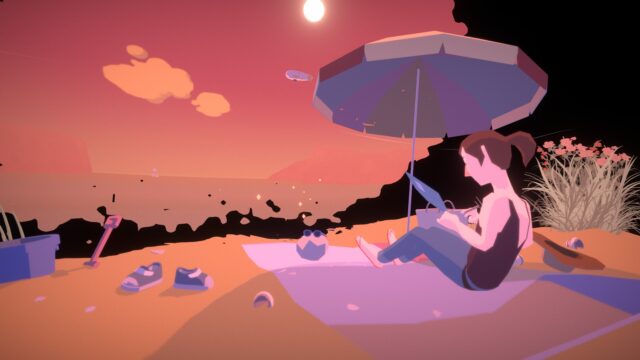Metal Gear Rising: Revengeance Review
I will warn you right away, the game is only available on Xbox and PlayStation platforms. *But as it became known in May,The game will also be available on PC..
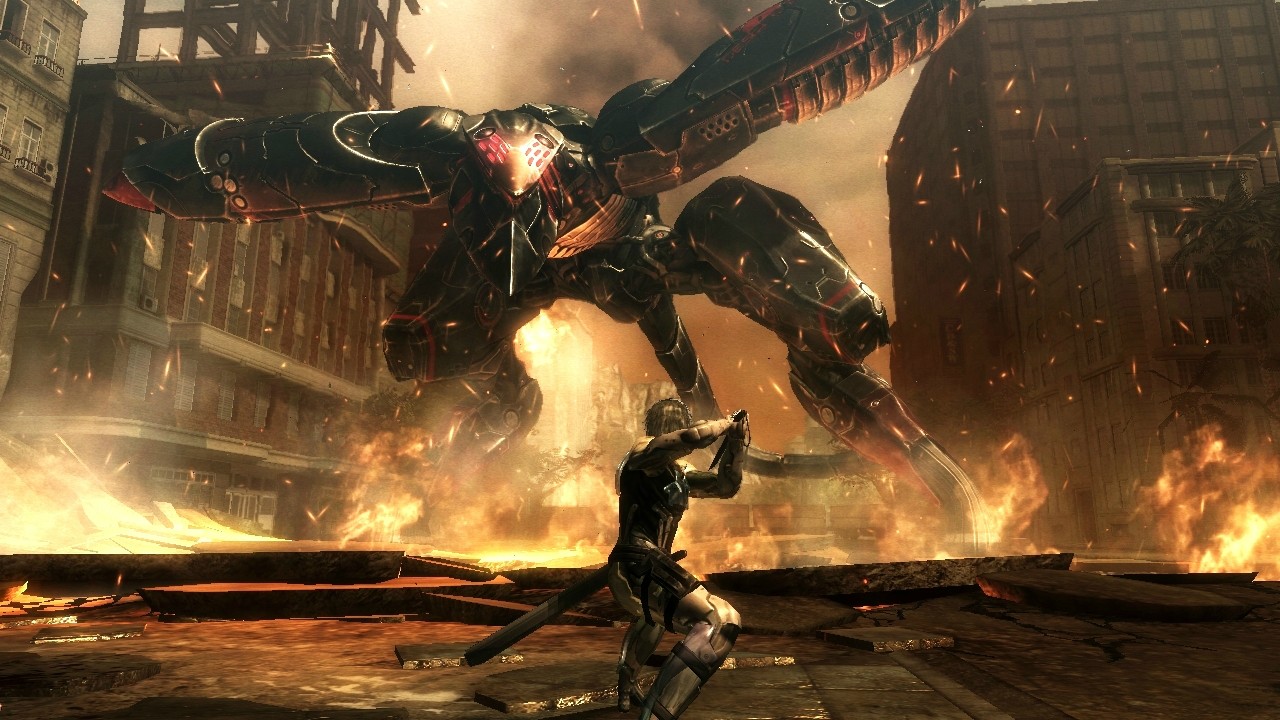
After you recover from the battle with the final boss of Metal Gear Rising: Revengeance, you will definitely need a cold shower. However, when the final credits roll on the screen, your excitement for the game may take on a mournful tone. You will suddenly realize that action movies are no longer the same from this very moment. Revengeance is the future of high-octane entertainment, a game that picks up speed from the first second and relentlessly races towards the final. And don’t forget to add a whole bunch of slow-motion moments, contrasting which the game looks even more dynamic.
Revengeance is the brainchild of Platinum Games, a spin-off of Metal Gear in the hack and slash genre, which tries to find its place alongside Devil May Cry, Ninja Gaiden, and another Platinum creation – Bayonetta. The combat system is based on two basic principles. The first is that blocking and parrying are now controlled by one button, and even more – the same type of press, although these actions were previously scattered across different buttons. The better you time your press, the better Raiden (who, by the way, is the main character) will defend himself. If you press too early, he blocks the attack without any benefit, and if you time it right, he parries it and unleashes a devastating counterattack, forcing the opponent to expose themselves.

At first glance, it seems that parrying in Revengeance is similar in functionality to a similar move in other slashers, but it’s not quite the same, because thanks to it, you enter a rage mode (and stay there until one of the opponents is still standing), and this is very important for the local combat system. This design decision hides a kind of message: either Raiden constantly crushes someone’s cybernetic sides, or simply dies.
The second innovation is the special aspect of the “slow-mo” mode called Blade Mode, aptly named (with Revengeance’s characteristic conciseness) Zandatsu, which means “cut and take”. Whoever came up with this is a genius. Raiden cuts the enemy in certain places, and then rips out their cybernetic spine. Wonderful. If the enemy is severely weakened or you have just parried their attack, a prompt appears on the screen indicating where to strike. Raiden makes a few frantic sword swings and soars upward, often taking the unfortunate enemy with him. Time slows down, and the camera selects an angle from some crazy perspective, and you have a few seconds to make a couple of sword strokes between the highlighted points. If everything goes well, another prompt appears – to rip out the opponent’s spine, after which you return to the harsh MG routine. It’s just an incredible spectacle.
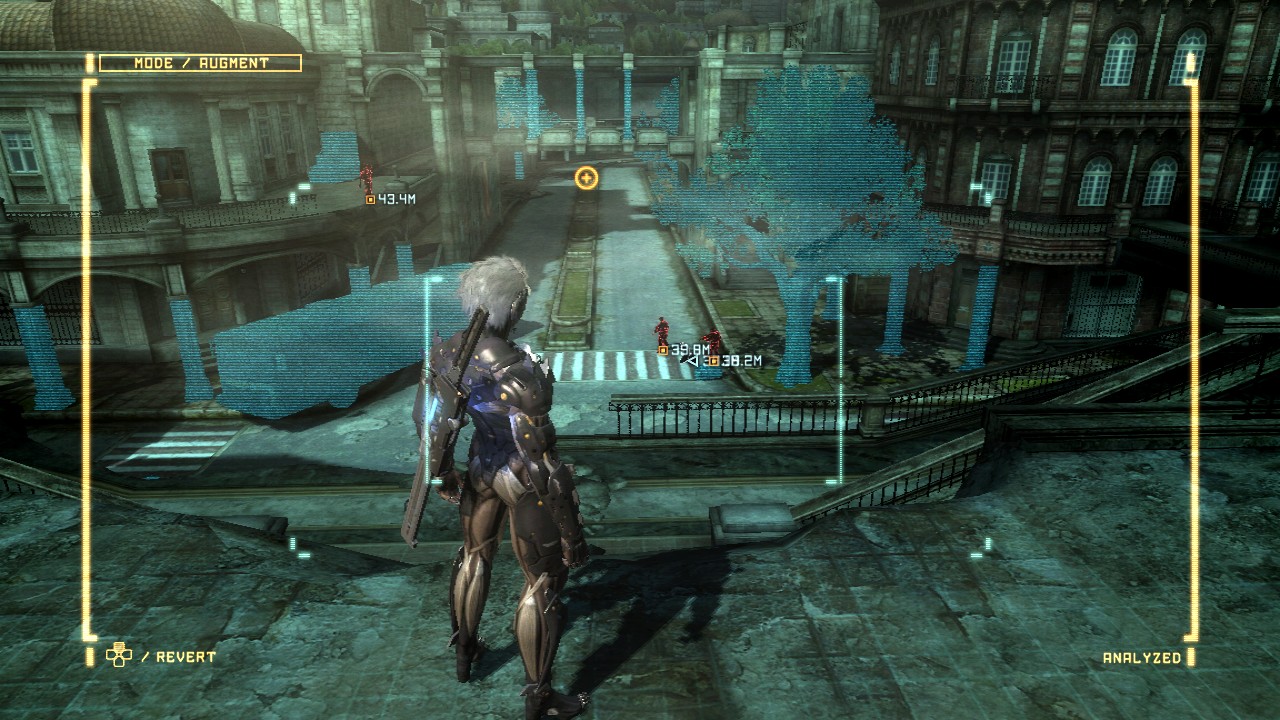
Some might think that Zandatsu is something similar to a quick-time event. But here’s the fact: personally, I don’t like QTE, but I really enjoyed the Zandatsu technique. The difference is that performing these “slow-mo” strikes is difficult because the camera slowly moves in a certain direction, creating a kind of pressure, and if the first strike is clumsy, the enemy’s remains will simply scatter without any benefit. The final touch, for the sake of which all this is undertaken (besides, of course, the contemplation of blood and remains), is the enemy’s spine, with the help of which Raiden replenishes his health and energy. There are no dropping menus with Vital Stars (like in DMC), so you need to confidently engage in combat, skillfully parry strikes, and extract a kilogram or two of spinal cord. Parrying and Zandatsu work together perfectly, making Raiden a fighter for whom not only aggression is important, but also the ability to maintain oneself in proper form with its help.
Raiden first appeared in Metal Gear Solid 2 and already then proved to be a wonderful character. However, in Revengeance, he was reimagined, as he became a playable hero and ultimately the one who, in all likelihood, will determine the future of the Metal Gear series, as it once was with Snake. There is a trophy in the game for completing it on the maximum difficulty with all S-ranks, and its name includes the phrase “Lightning God.” There are simply no better words. Raiden is sharp as a razor blade, fast as the wind, and strong as a storm. The infinite complexity of Raiden’s movements can only be compared to their speed. Destructive and unstoppable force that dashes across the screen from side to side, resolutely overthrowing everything in its path.
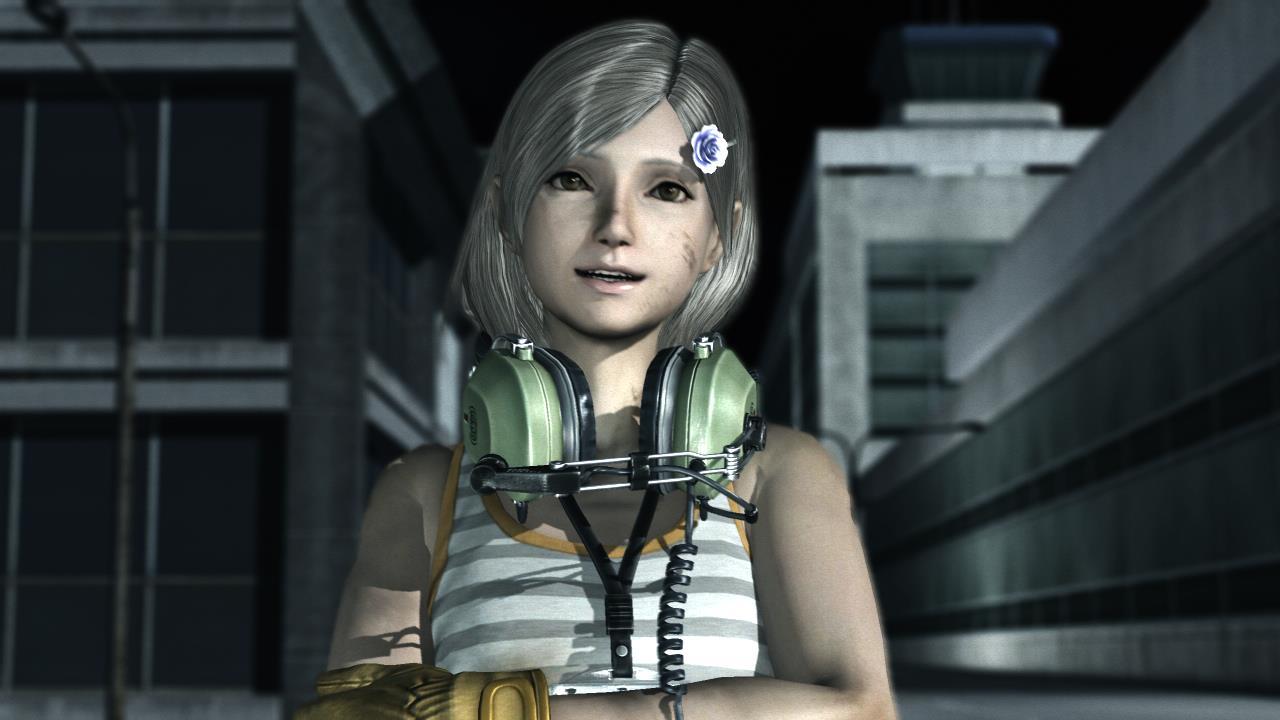
The Wind of Change and Destruction
The Metal Gear series is famous for its bosses. In Revengeance, they are represented by the so-called “Winds of Despair” – four cyborgs that you will have to fight one-on-one, not to mention battles with a couple of other giant Metal Gear mechs. These cyborgs, of course, have the spirit of Kojima (both in the name and in the design), but the battles have moved to close quarters and, perhaps, that’s why they have become more intense, which is still somewhat of a departure from the main MG style. For example, before engaging in a fight with his “colleague” Raiden, Sam says, “Enough of this philosophical nonsense – let’s go!”
But what is disappointing is that the psychological aspect of Metal Gear battles is only present in cutscenes. However, you can also look at it from another perspective – the grandeur of the fights and even some of the boss’s tricks (such as the Monsoon grenades that obscure visibility) are essentially metaphors for fear and confusion. And the final musical touch – dynamic heavy metal compositions with vocals resembling a battle cry… thanks to all of this, the innovations finally blend in with the main MG style.
Raiden’s main weapon is an electric sword-katana, the parrying and swing speed of which are tied to the quick attack button. Later, in addition to it, secondary weapons can be used: a staff for fighting large crowds, sais for stunning and pulling enemies towards him, as well as giant scissors with serrated machete-like edges. Each of these combinations dictates its own fighting style, but to learn how to use them, you will have to put in some effort. Raiden is so powerful that if left unattended, he will leave no stone unturned in the surrounding landscapes.
This is what Revengeance is all about – keeping Raiden in a state of madness for as long as possible, crushing everything in his path. And as a result, the spectacle of the battle is so captivating that you don’t want to miss a single moment. Playing Revengeance means facing relentless enemy pressure head-on. Dealing with a single attacker is not easy, let alone dealing with a group attack. Revengeance, more than any other Platinum game, has come close to Ninja Gaiden in terms of precision and aggressive ruthlessness of enemies (depending on the difficulty level, of course), but ultimately, even that bar has been raised. Enemy attacks come continuously, both up close and from a distance, so any careless defense will be shattered. Often, the enemy attacks from off-screen, so you need to learn to react not only to visual but also to sound cues.
The basic infantry are cybernetically enhanced humans who fight with stunning sticks, swords, police shields, rifles, and bazookas. The variety of sword techniques is a separate pleasure of the game. Once you parry a strike, Raiden rushes straight into a sparkling, sparks-flying mini-duel right in the midst of the battle storm. However, fighting a large number of enemies is a more serious task, as they always attack from different angles and coordinate their attacks to make parrying as difficult as possible. Once you are hit, even slightly, you will need an instant mental reboot to catch the rhythm of timing again. The group melee combat in Revengeance accumulates so much energy that it would be enough to power Tokyo, and it only intensifies with the “slow-mo” effect. Only a few actions have come close to something similar.
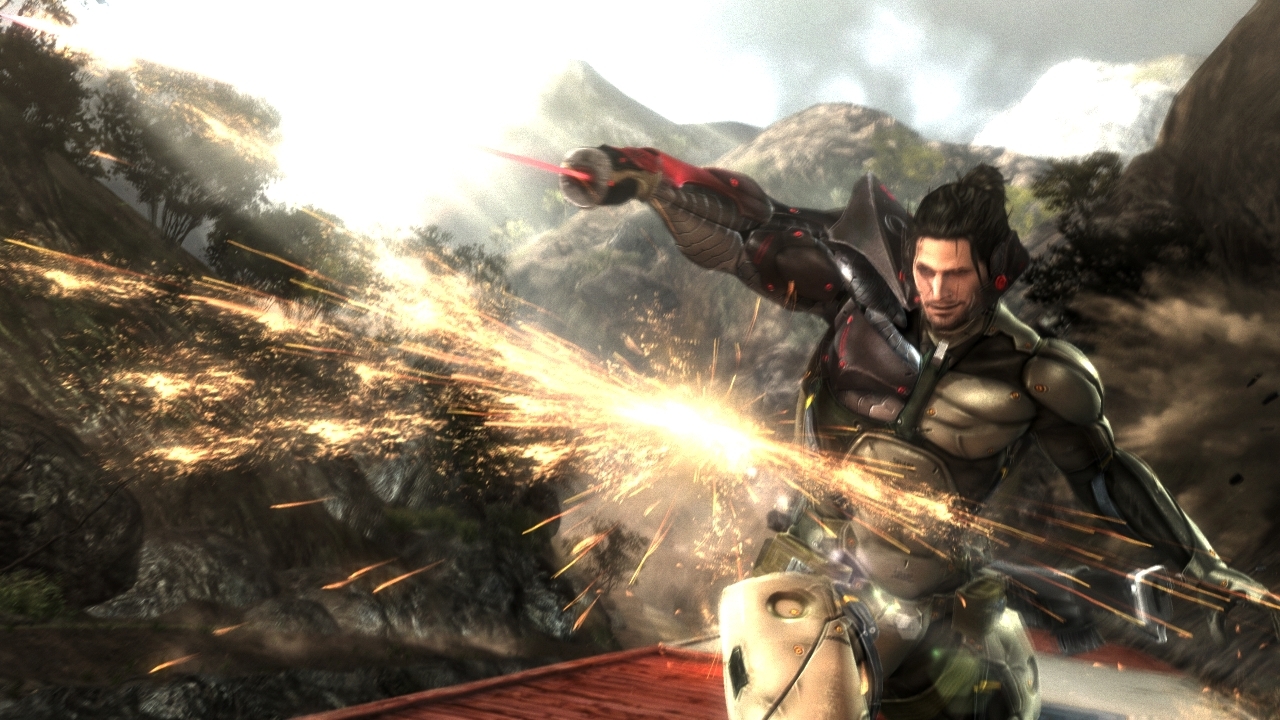
In addition to infantry, cyborgs and biomechs are the villains in Revengeance. The mooing Gekkos from Metal Gear Solid 4 hit like a crane and moved like a herd of bulls, while the local android gorillas literally hinder Raiden with dirt, using their almost unblockable grabs (at this point, the main character has already learned “attacking defense”, i.e. evasion, which allows him to deliver a powerful blow to an opponent who uses a grab). These enemies do not know fatigue (and they should not) and therefore, being in the majority, easily defeat Raiden – even the most solid defense is difficult to withstand three strikes and one throw at the same time. You won’t have time to recover before the main character’s health bar reaches zero. No one will hesitate: these robo-sweethearts will only need to corner Raiden, and it’s game over.
No battle in Revengeance is like another, not only because Raiden has to fight different sets of enemies, but also because they know how to attack in different ways. Strike with the first “parrying” blow and you will rush headlong through enemy bodies, slicing everything like a master chef and not missing a single piece, smoothly transitioning from one counterattack to another, even more devastating, and finishing the whole brawl in a matter of seconds. But if Raiden misses a single blow to the head, he falls flat on his face and becomes a helpless “ragdoll”, as huge “metal gears” immediately start jumping on him, crushing his last breath. And if you simply block (which usually happens), the battle will resemble hammering a nail.
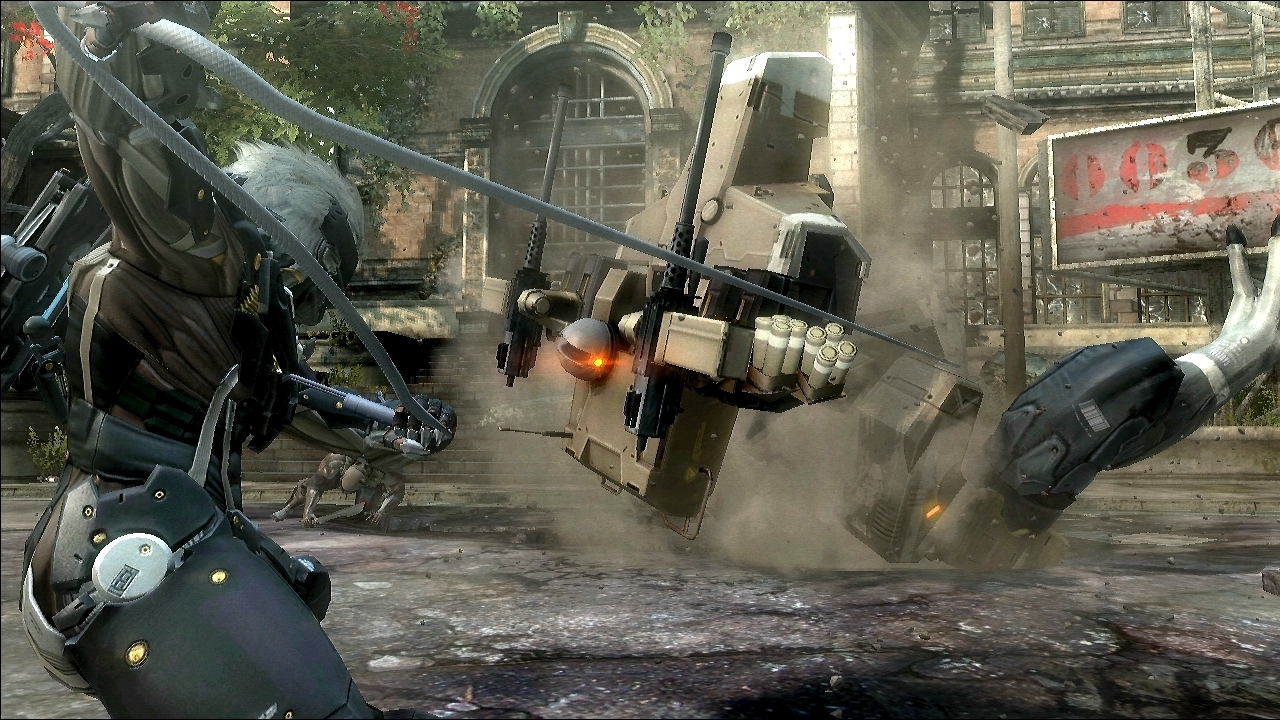
Plot of MetalGear
Now Raiden is a cyborg, definitively and irrevocably. Not to mention, of course, that he is also a perfect killer. In general, there is plenty of room for intrapersonal conflict (such as Raiden’s reflections on his nature) and therefore material for cutscenes is abundant. However, it is not surprising, as this is Metal Gear after all. As usual, Quinton Flynn (the actor who voices Raiden) will not miss an opportunity to dissect every plot detail, which, however, does not prevent Revengeance from remaining a dark and interesting interactive narrative. Even though the game’s plot is somewhat of a compromise.
This is not critical, as the cutscenes are much shorter than usual and occur much less frequently than one would expect from Metal Gear, which is quite fitting for the game genre. On one hand, to renounce such “fatness” and abundance of previous games (for example, like in Metal Gear Solid 3) is, of course, somewhat of a betrayal, but on the other hand, there is definitely still the MGS4 style here, plus even the heartwarming conversations via Codec. Sunny is still the same terrible character, not to mention that Revengeance even has its own Jar Jar Binks in the form of a boy named George. But regardless of what this game can boast, perhaps the best story in the history of action games, let’s be honest, it is still not what we usually mean by a plot.
This is precisely one of those things that makes Revengeance part of the big Metal Gear family: real politics and toilet humor intertwine here, science fiction and pop culture, highbrow and lowbrow. Few games are capable of telling a story about the war on terror through a comedic scene with a fight, shooting at male genitals, and references to 9/11 and weapons of mass destruction. Being both intellectual and silly, Revengeance is also a first-class comedy: “If America goes down the drain, you’ll just be another worm in the pile that’s left!”
Among other pleasant features that Revengeance inherited from Metal Gear, for example… yes, that very cardboard box. Most battles start without your consent, but sometimes enemies don’t realize Raiden is nearby. In such situations, you can use the tried and true crawl (patented by Solid Snake!) to get close to the enemy and perform an instant kill. Battles that usually utilize this skill are slightly more difficult than others, so I don’t mind such executions at all, as they level the playing field. And let’s not forget the pleasant emotions that this cardboard box can provide… stealthily creeping through a world populated by bloodthirsty killer robots.
However, I have a couple of negative words about the length of Revengeance. My first playthrough on Hard difficulty lasted a whole 9 hours, and the second on Very Hard was almost the same. Just put yourself in my shoes – all this time I was earning my keep, as each level is very long. But, on the other hand, it doesn’t resemble any other game and therefore fully deserves to exist. The game combines a multitude of incredible settings, take for example, a traditional Japanese garden on top of a skyscraper, lovingly constructed from many detailed pieces. And on the very first level, Raiden jumps up using rocket jumps, then races down a crumbling church (accompanied by a perspective shift like you’ve never seen before), all the while intending to split a giant Metal Gear in half – and that’s not even the climax. Just the first level.
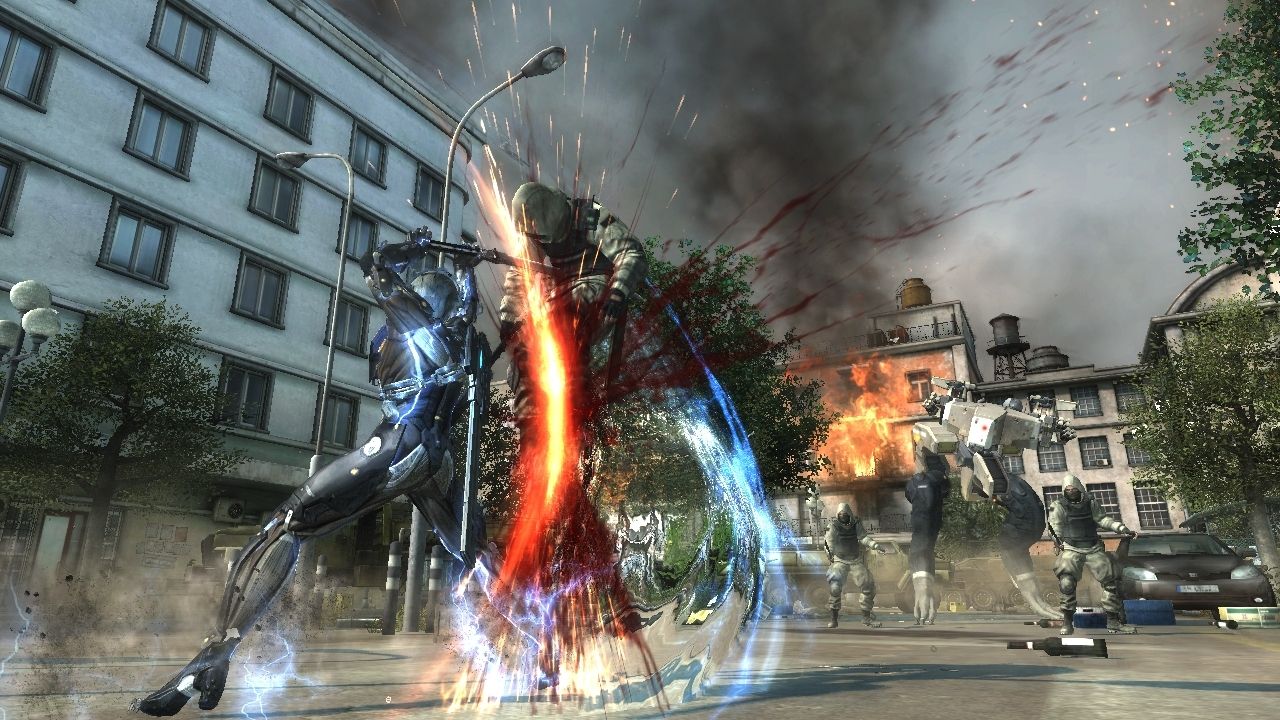
One of those moments when the game shows itself not in the best light is the camera, which often not only leaves an unpleasant impression but also ruins the battles altogether. For example, it starts to get on your nerves when Raiden is close to a wall, especially considering that this happens in situations literally between life and death – when enemies manage to corner you. All slashers suffer from this ailment to some extent, but in Revengeance, it can drive you to natural madness, as one of the vital elements of the game, i.e. parrying, directly depends on precisely directed movement to the same extent as proper timing. Therefore, if you have to parry a blow near a wall, and the camera unexpectedly decides to switch to an enemy from a different angle, I sincerely wish you good luck.
All of this is very sad, including the fact that the insane camera becomes an even bigger problem at higher difficulty levels, and even the fact that the rest of Revengeance is insanely good does not diminish this flaw. Although it seems to be just a sacrifice (and a significant one) that had to be made in favor of other merits.
If Revengeance didn’t have camera problems, my personal rating would have been enriched with another good game, but all the other elements are simply beyond praise. Metal Gear successfully explores a new genre for itself and even more than that – skillfully adapts the central idea of the series to the point where all other competitors look terribly bad. Essentially, it’s a one-actor show, or rather, a cyborg, that you want to keep coming back to. Earning experience exponentially. Becoming faster and better. Metal Gear Rising: Revengeance is an exciting and almost flawless action game. Try it for yourself, at least a piece.
Share
Discuss
More Reviews



